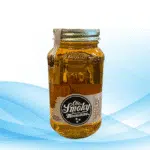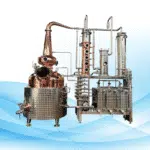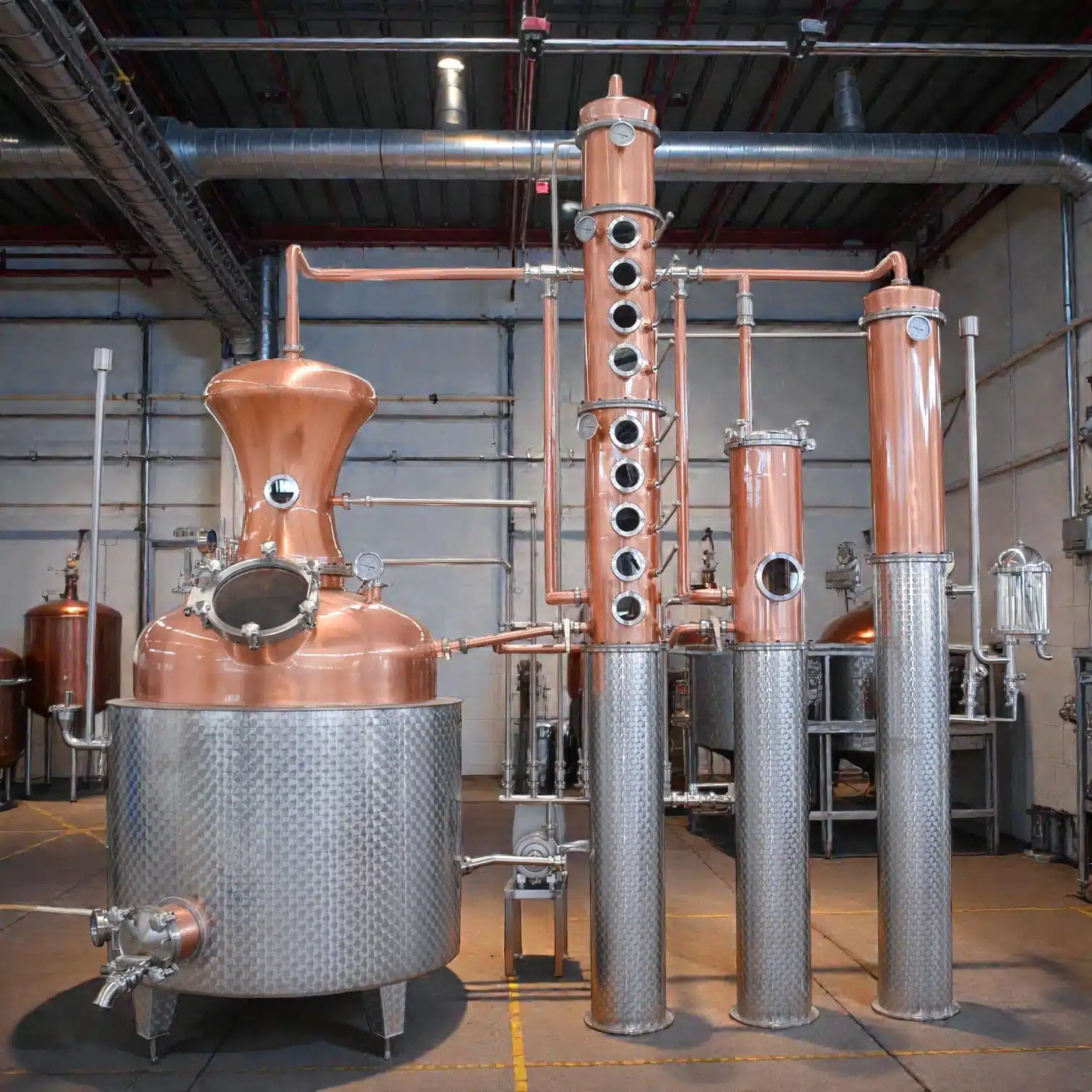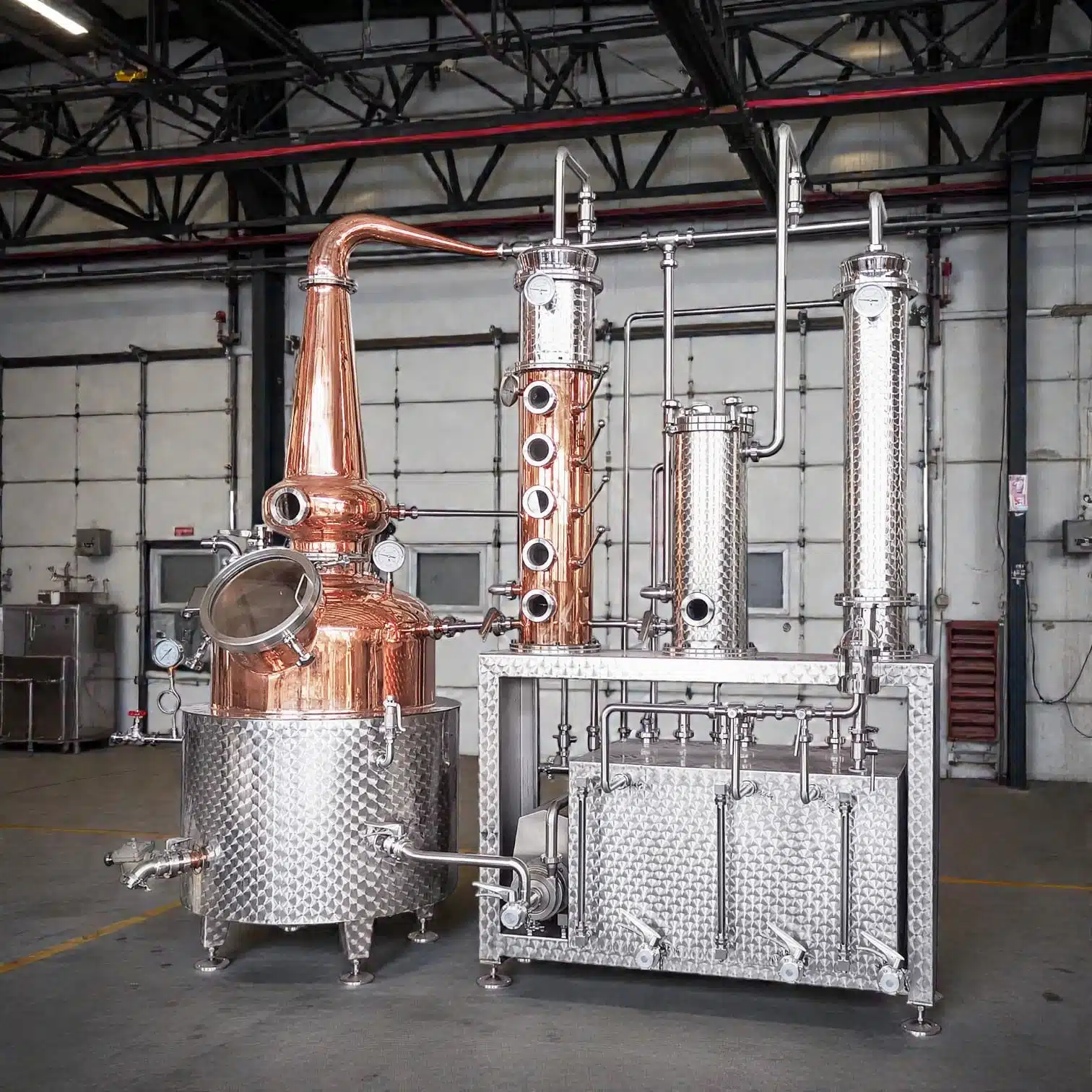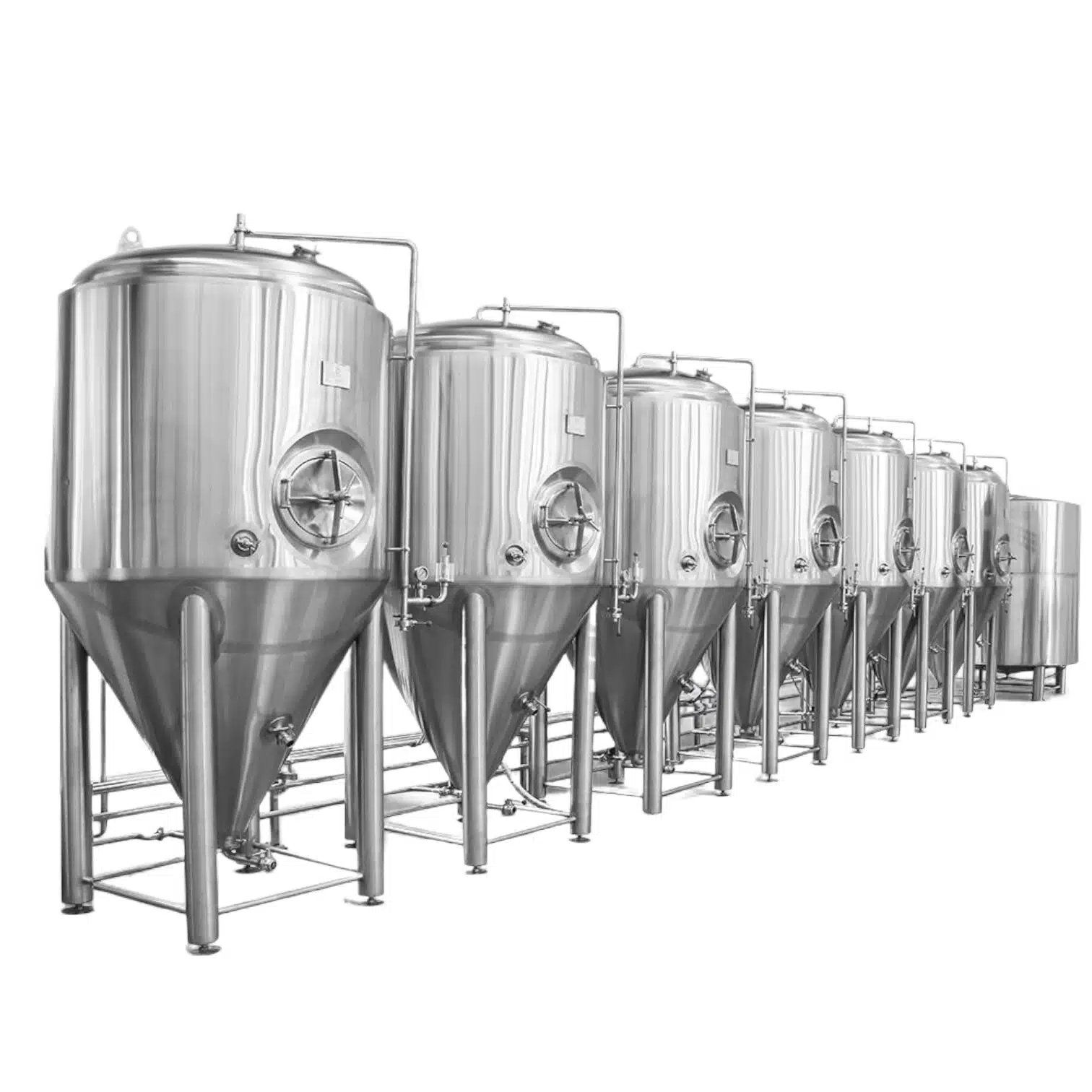Introduction: What Is an Alcohol Distillery?
Most people picture a rustic, copper-still setup when they hear distillery, and for good reason: centuries of tradition and stories surround the making of spirits such as whiskey, vodka, rum, and gin. Yet beneath the romantic images lies a straightforward question-what, precisely, is an alcohol distillery? Answering that question reveals the technical backbone of almost every drink that contains distilled spirits.
At its core, an alcohol distillery is any facility where fermented ingredients are converted into stronger, purified beverages by means of distillation. The temperature-controlled heating, cooling, and collection steps allow operators to isolate ethanol, leaving behind much of the unwanted water and fuel oils. That artful separation is what transforms a mildly alcoholic mash into a clear, shelf-stable product. Learning how modern sensors, pot stills, and even warehouses shaped by climate work together gives consumers new respect for every sip.
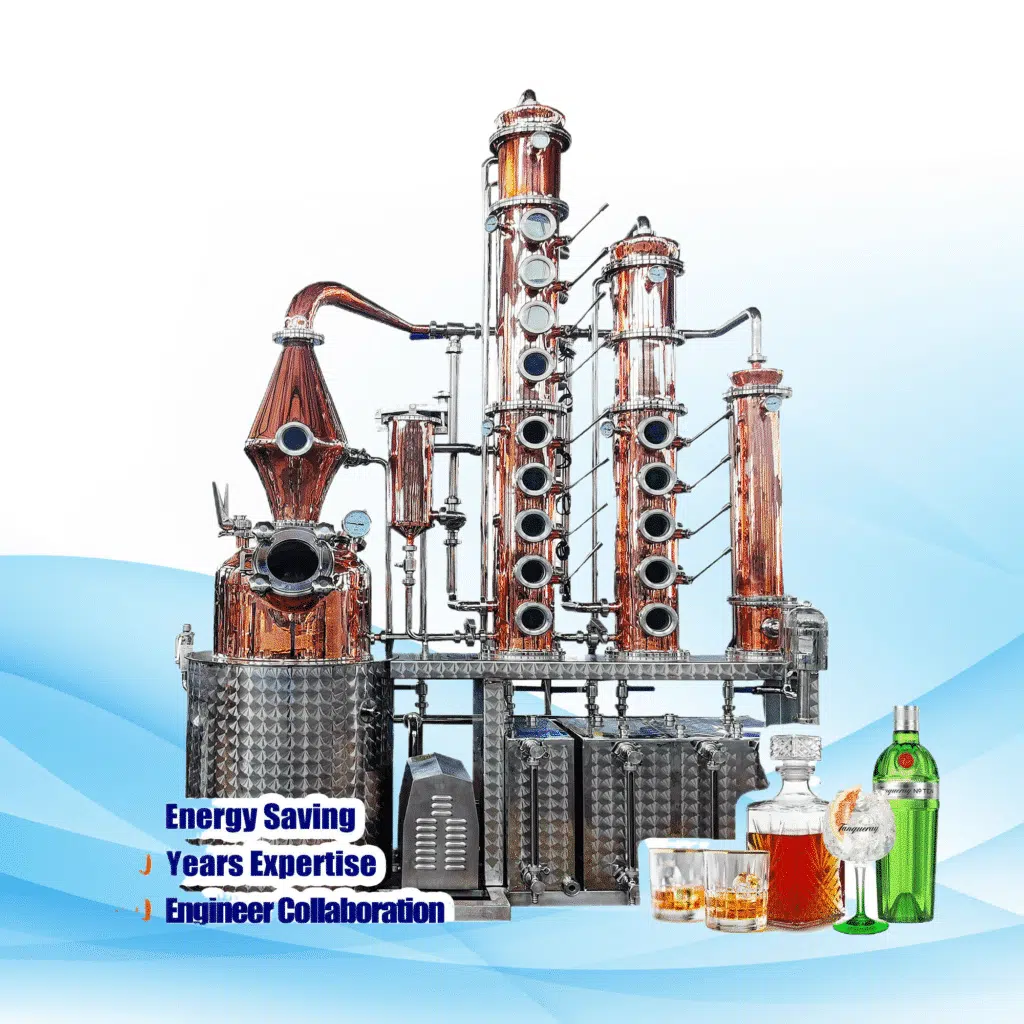
How Does an Alcohol Distillery Work?
Although individual distilleries may adopt specialized practices depending on the spirit being made, most follow a broadly similar series of steps to convert raw ingredients into bottled product. The key phases are outlined here.
Fermentation
Production begins with fermentation, the biochemical transformation in which yeast metabolizes fermentable sugars from grains, fruits, or tubers and yields ethanol and carbon dioxide. The resulting liquid, known either as wash or mash-terminology depending on the raw material-is comparatively low in alcohol content.
Distillation
Once fermentation finishes, the distillery proceeds to distillation, the stage in which a still heats the wash and capitalizes on the differing volatility of its components. Because ethanol boils at a lower temperature than water, the alcohol vapor rises first, is collected, then cooled, condensed, and returned to liquid form that boasts a markedly higher alcoholic strength.
Aging (Optional)
Spirits such as bourbon or single malt whisky are placed in charred oak barrels for months or years so that they can extract wood compounds and develop the characteristic aroma and flavor sought by consumers. Other products, notably neutral vodka or gin, are filtered and bottled shortly after distillation, rendering barrel aging unnecessary.
Bottling
When distillation ends and any necessary aging or filtering is done, the spirit moves to bottling. Before filling the bottles, the distiller often adds pure water to bring down the proof; unaltered spirits are frequently too high in alcohol for safe pouring or pleasant drinking.
Types of Alcohol Distilleries
A wide variety of distilleries make different kinds of liquor, each using techniques suited to its target beverage. A few of the better-known categories are listed below.
Whiskey Distilleries
Whiskey makers work with specially chosen grains-barley, corn, or rye-and mature the spirit in charred oak barrels for months or years. Regions recognized for whiskey include Scotland, Ireland, and several areas of the United States.
Vodka Distilleries
Vodka can spring from fermented grains, potatoes, or even certain fruits, yet it remains unaged. The liquor is distilled multiple times to strip flavor and aroma, making the finished product remarkably neutral. Russian and Polish brands have long set the standard.
Rum Distilleries
Rum distilleries extract alcohol from sugarcane, often using either molasses or fresh cane juice as the starting material. Most Caribbean countries boast at least one such facility, and many allow the spirit to age in barrels that add depth and spice to the final taste.
Gin Distilleries
Gin distilleries produce gin by redistilling neutral spirits with juniper berries and a blend of botanicals that flavor the final product. Although London and other areas of the United Kingdom remain synonymous with gin, an increasing number of craft distillers in Europe, Australia, and North America are adding their own regional expressions to the category.
The Importance of Alcohol Distilleries
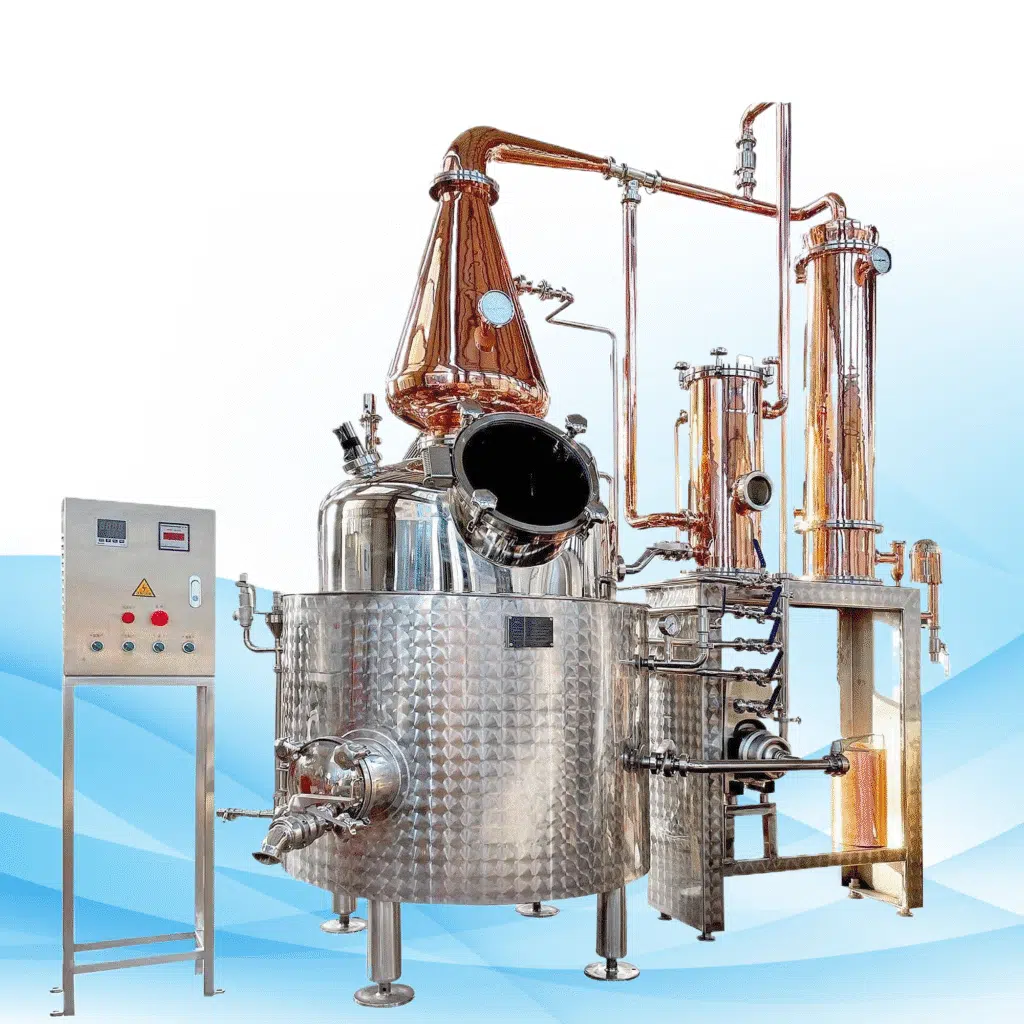
Across many nations, alcohol distilleries form important links between economy and culture. Below are a few of the reasons they continue to matter on both local and global stages:
Economic Contribution
Distilleries generate tax revenue, directly employ workers, and attract visitors whose spending supports hotels and services. In Scotland, Ireland, and parts of the United States, distilleries function as small factories and tourist hubs, collectively exporting billions of dollars worth of spirits each year.
Cultural Heritage
The practice of distilling spirits has evolved alongside local customs, folklore, and cuisine, shaping regional identities in the process. Scottish whisky makers, for example, have passed their techniques from one generation to the next for hundreds of years, embedding their work in national celebrations, literature, and law.
Craftsmanship and Innovation
Although mass-market beverages still flow from towering industrial plants, craft distilleries are appearing on the global stage. Some of these smaller, independent facilities are reworking forgotten recipes, while others are mixing local herbs, fruit, or grains into their spirits to give the liquors a premier taste that cannot be found elsewhere.
Common Types of Distillation Equipment Used in Alcohol Distilleries
Inside every distillery, a variety of machines takes turns along the still line, because each step uses the best tool for that job. The following descriptions introduce the equipment most likely to be seen in working facilities:
Pot Still
Arguably the grandparent of distillation hardware, the pot still is a copper vessel that quietly boils the mash, cools the steam, and learns its lessons with each batch. Distillers favor it for whiskey, rum, and brandy, believing the relatively low reflux helps preserve a spirit’s story and regional character.
Column Still
In contrast, the column still-or continuous still-keeps the fermented wash moving upward through stacked plates, so that higher-proof vodka, gin, and neutral spirits take shape around the clock. Taller, more insulated, and mathematically elegant, it pushes production limits while balancing efficiency with duty as an industrial workhorse.
Hybrid Still
The hybrid still joins the pot’s rounded charm and the column’s vertical discipline, letting distillers switch between gentler cuts or powerful output depending on what the recipe demands. By blending the two designs, a single rig earns its keep across several product lines and mood-driven finishes.
Conclusion: Why Should You Understand the Alcohol Distillery Process?
Knowing how distilleries turn raw ingredients into refined spirits can change the way you taste and talk about your favorite drinks. If you enjoy whiskey, gin, vodka, rum, or any other spirit, learning about mashing, fermentation, and distillation helps you see why some bottles are smoother or more complex than others. Behind every clear or amber liquid, there are centuries of tradition plus modern experiments that keep the industry alive and interesting.
Frequently Asked Questions (FAQ)
What is the difference between a distillery and a brewery?
A distillery creates high-proof spirits by boiling the fermented wash and collecting the vapor, while a brewery ferments the same wash without boiling it again, so what it makes stays lower in alcohol and becomes beer.
Is all alcohol distilled?
No, many alcoholic drinks are produced only through fermentation, such as beer, wine, and cider; distillation is an extra step used in spirits like whiskey, rum, and vodka to raise the alcohol content and add specific flavor traits.
Is it possible to distill alcohol safely at home?
In numerous jurisdictions, home distillation of alcohol is prohibited because of potential hazards and legal issues. The process requires high temperatures and volatile liquids, creating serious dangers such as fires, explosions, and toxic exposure if safety protocols are ignored.
What measures do professional distilleries take to guarantee product quality?
Commercial distilleries enforce rigorous quality-control steps, including choosing premium ingredients, closely monitoring fermentation and distillation parameters, and employing precise aging methods. Many facilities also apply advanced filtration systems, such as charcoal beds or reverse osmosis, to remove undesirable compounds before bottling.





